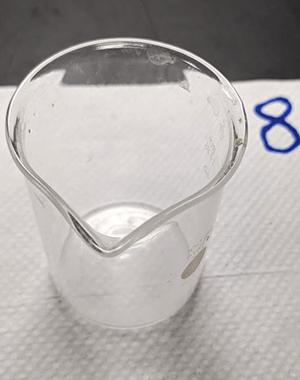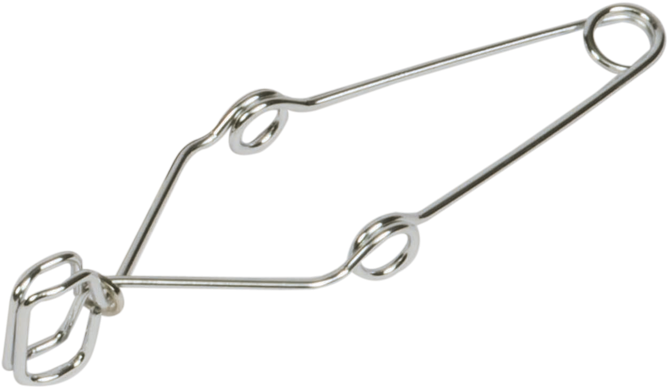
As an icebreaker activity, I set up stations in the lab with various equipment students may encounter. In pairs, they walk from around the lab and write down the name of the item and what it does. This is a great way to get students moving and talking to each other!
Some of the items are simple, like a beaker, though students may not always know the scientific name. For example, I had many students call the beaker a “glass measuring cup.” I actually get a kick out of reading some of their names and descriptions. Even if they don’t know the proper name, they can usually come up with some idea about what it does.
Another benefit of this activity is that students learn the procedure for doing this type of lab. Eventually, they’ll need to do something similar with naming pinned organs on the frog after the dissection. Station labs are a great way to have students DO science if you have limited equipment or want students to perform short tasks. I use a similar activity when introducing characteristics of life. Students circulate around the lab and determine if something is “alive” or “not alive.” There is an absolute benefit for getting students out of their desks and moving and talking to each other.
I have also in the past done more traditional icebreaker activities, like “Saving Sam” or the Cup Challenge. I think I like this one best because students can get into the spirit of science. Plus, you can just pull items from your lab cabinets, choosing things appropriate for the grade level.
Here’s a list of things you might display:
- Pipet (micropipette)
- Inoculating Loop
- Petri dish
- Graduated cylinder
- Beaker
- Test tube
- Test tube clamp
- Bunsen burner
- Thermometer
- Forceps
- Syringe
- Microscope slide
- Safety goggles
- Well plate
- Microcentrifuge tubes
- Test tube / bottle brush
- Stirring Rod
- Stethoscope
- Magnifying Glass
- Triple beam balance
Don’t worry if the items seem too basic. Many of my freshman students couldn’t name the thermometer, though most did know what its function was. Also, if you can find things that are interactive, they seem to have more fun with that, like playing with the test tube clamps. One group named that item “tiny tongs.” If nothing else, you can learn a lot about your group, their science background, and their creativity.

You can have students just write the answers on notebook paper or give them this printout with the numbers and text fields for students to write their answers. I do not give a grade for this, but will tell students what each item is at the end of the activity. You could potentially modify this as an online activity, but it will definitely not be as fun if students aren’t allowed to manipulate (play with) the objects. Side note, most beginning students haven’t been given the lab safety talk, so avoid objects that might be dangerous, like a scalpel.

